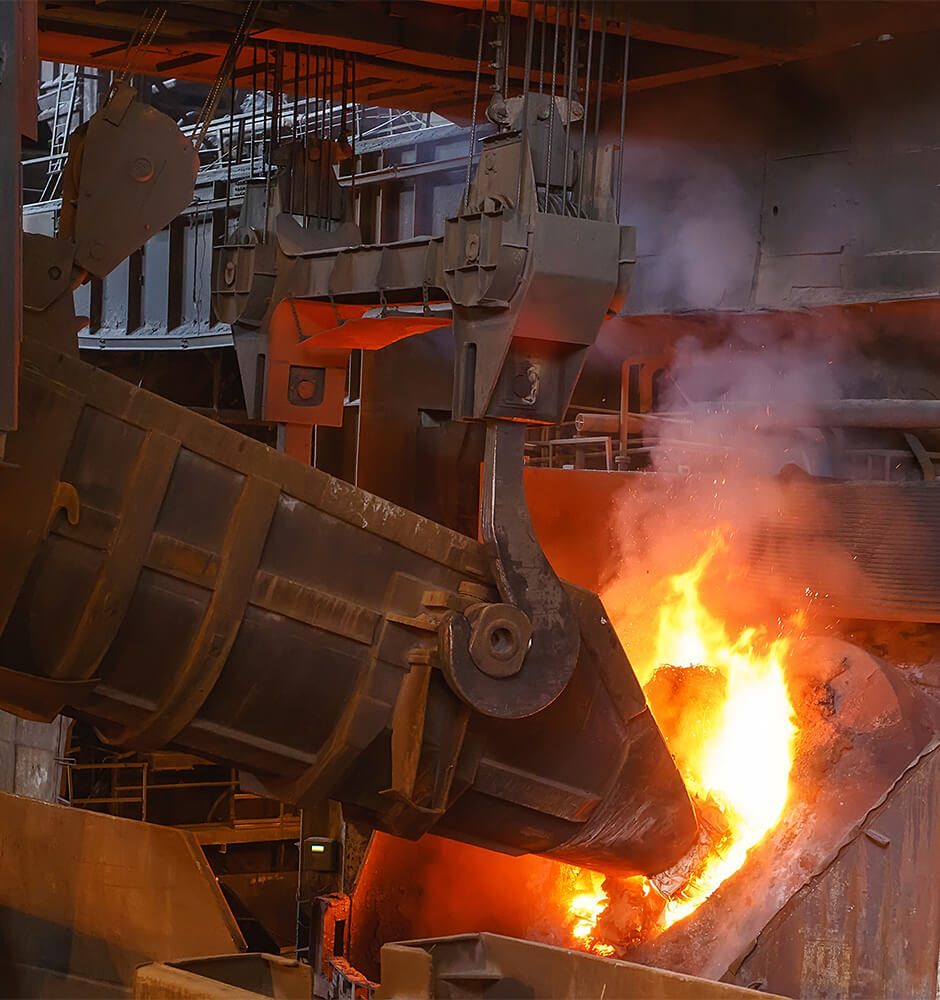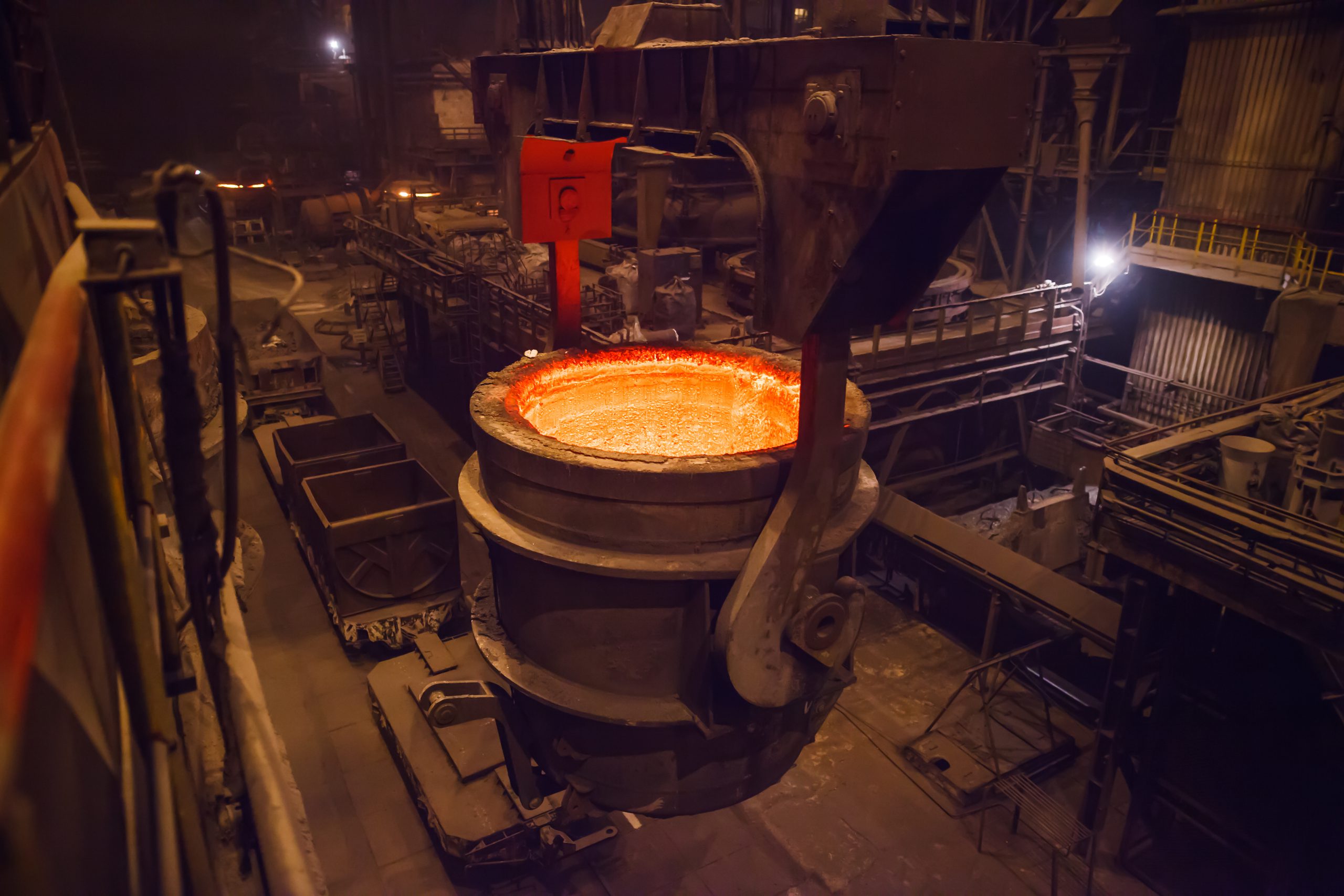Foundry Evolution: From Ancient Beginnings To Today's Tech
Ever wondered how the gleaming machines of our modern world are born? The answer lies within the heart of the foundry, a realm where raw materials are forged into the very structures that define our civilization. The foundry industry's journey is a testament to human ingenuity, a story of transformation from rudimentary beginnings to a technologically advanced sector that underpins nearly every aspect of modern life.
While terms like "artificial intelligence" and "blockchain" often dominate the headlines, it's easy to overlook the foundational importance of foundries. They are the crucible in which the future is shaped, the backbone of global manufacturing, and the birthplace of countless innovations. The evolution of the foundry industry isn't just a technical story; it's a narrative of human progress, of how we've learned to master the elements and create the building blocks of a world we can barely imagine. Let's delve into the molten core of this remarkable sector, exploring its past, present, and future.
The foundry industry's evolution is a compelling reflection of broader human innovation. From primitive furnaces to cutting-edge facilities, this journey is punctuated by pivotal moments and groundbreaking inventions that have indelibly altered our world. Whether you're a seasoned professional or simply curious about this dynamic field, understanding its trajectory is crucial. This article will provide an overview of the foundry industry, examining its history, technological advancements, market trends, sustainability efforts, challenges, innovations, and global impact. Consider this your guide to the molten heart of modern manufacturing.
The foundry industry evolution is not merely about the melting of metal; it is about the shaping of the future. Well analyze the history, the technological advances, the market trends, and the sustainability concerns that define this dynamic field.
Heres what we'll cover:
- History of Foundries: From Ancient Beginnings to Modern Marvels
- Key Technologies Driving Foundry Evolution
- Market Trends Shaping the Future of Foundries
- Sustainability in the Foundry Industry: Greening the Future
- Challenges Facing the Foundry Industry Today
- Innovations Redefining Foundry Operations
- Global Impact: How Foundries Shape Economies
- The Changing Workforce in the Foundry Industry
- Regulations and Compliance: Navigating the Modern Landscape
- Wrapping Up: The Future of Foundry Evolution
History of Foundries
Let's journey back to the dawn of metallurgy, when the earliest foundries were rudimentary operations. Picture simple pits dug into the earth, where early metallurgists combined copper and tin to create bronze. These early experiments, despite their basic tools and techniques, laid the foundation for the vast industrial complex that exists today. These pioneers were the first to master the manipulation of metals, a skill that would reshape human civilization.
From Bronze to Steel
Fast forward several millennia, and we enter the Iron Age. This era witnessed the flourishing of ironworking, with foundries beginning to resemble the workshops we recognize today. A pivotal advancement came with the introduction of blast furnaces in the medieval period. This innovation enabled the large-scale production of cast iron, which had profound implications. Suddenly, items ranging from cannons to cooking pots could be produced with newfound efficiency. This period represented a major turning point in the foundry industry evolution.
The Industrial Revolution then transformed everything. Foundries became the engines of industry, churning out the steel and iron that fueled railways, bridges, and factories. This period saw extraordinary growth, and the foundry industry evolved at an unprecedented rate as technology advanced at a rapid pace. The demand for metal surged, and foundries were at the forefront of this industrial surge, playing an essential role in the construction of the modern world.
Key Technologies Driving Foundry Evolution
Technological advancements have fundamentally transformed the foundry industry. Today's foundries, with their automated casting systems and 3D printing capabilities, are a world apart from their ancient predecessors. This progress has not only enhanced production efficiency but also created new capabilities. Lets examine some of the key technologies currently driving the foundry industry evolution.
- Automation: Robots and automated systems are now responsible for repetitive tasks, increasing efficiency while reducing human error. This shift has increased safety and allowed workers to focus on more complex tasks.
- Digital Twin Technology: Foundries can now create virtual replicas of their operations, optimizing processes even before any metal is melted. This allows for simulations and adjustments to ensure that the casting process is as effective as possible.
- 3D Printing: Known as additive manufacturing, this technology is revolutionizing the way complex components are produced. It provides unprecedented design flexibility and minimizes material waste, enabling foundries to create intricate parts more efficiently.
Market Trends Shaping the Future of Foundries
The foundry sector, like all industries, constantly adapts to shifting market demands. Lightweight materials are a major trend in the aerospace and automotive sectors, which is driving innovation in foundries. Companies are developing new alloys and processes that meet these needs without reducing strength or durability.
Customization on Demand
Another significant trend is the growth of custom production. Customers now want parts tailored to their specific needs instead of one-size-fits-all solutions. This demand has accelerated the development of flexible manufacturing systems that can rapidly adapt to changing specifications. These systems offer versatility and are essential to meeting the individualized needs of today's customers.
Sustainability in the Foundry Industry
Foundries have been associated with environmental concerns, but there's a significant shift towards sustainability. The foundry industry evolution now includes a strong focus on environmentally friendly practices, with companies investing in cleaner technologies and more efficient processes. This transition is essential for the industrys long-term viability. Here's how the industry is "greening" itself:
- Renewable Energy Sources: Many foundries are switching to solar, wind, or hydroelectric power to reduce their carbon footprint. This shift helps reduce emissions and promotes cleaner energy.
- Waste Reduction: Advances in recycling and reusing materials are helping to minimize waste and conserve resources. These techniques not only reduce environmental impact but also improve efficiency.
- Energy Efficiency: New furnace designs and insulation techniques are allowing foundries to melt metals using significantly less energy. This reduces both costs and environmental impact.
Challenges Facing the Foundry Industry Today
The foundry industry has experienced its share of hurdles. Global competition, regulatory pressures, and a skills gap are key challenges today. Addressing these issues is essential for the foundry industry to prosper. This list highlights the major issues facing the sector:
- Global Competition: As foundries proliferate worldwide, competition is fierce. Companies must work hard to remain competitive.
- Regulatory Pressure: Governments are intensifying regulations on emissions and other environmental impacts, which compels foundries to make costly upgrades.
- Skills Gap: As older workers retire, there is a growing shortage of skilled labor, especially in advanced manufacturing roles. Filling this gap is crucial for continued innovation.
Innovations Redefining Foundry Operations
Despite these challenges, the foundry industry continues to evolve thanks to a steady stream of innovations. For example, artificial intelligence (AI) is being used to enhance casting processes. AI systems analyze vast amounts of data to find inefficiencies and suggest improvements that humans might not be able to detect. This increased precision enhances the quality of castings.
Advanced Materials
Another area of innovation is the development of new materials. Researchers are constantly experimenting with different alloys and composites to create metals that are lighter, stronger, and more durable than ever before. These breakthroughs are expanding the possibilities for industries ranging from healthcare to space exploration. By developing cutting-edge materials, the industry is constantly expanding its capabilities.
Global Impact
The impact of the foundry industry on global economies is difficult to overstate. Foundries provide jobs for millions worldwide and contribute billions to GDP. In many countries, they are a critical component of the manufacturing ecosystem, supporting everything from agriculture to construction. Their importance stretches far beyond the direct employment and revenues generated.
Emerging Markets
Foundries play a crucial role in driving economic development in emerging markets. By investing in modern facilities and training local workers, these countries are positioning themselves as major players in the global foundry industry. This creates a mutually beneficial situation, fostering opportunities for businesses and communities. The expansion into these markets signifies their importance.
The Changing Workforce in the Foundry Industry
The foundry industry evolution is reshaping the workforce. Traditional roles are evolving, requiring a blend of technical and interpersonal skills. Foundries are increasingly looking for individuals who are technologically proficient and adaptable to changing environments. Training programs and ongoing education are becoming increasingly important.
Upskilling and Reskilling
Many companies are investing in training programs focused on upskilling and reskilling employees to address the skills gap. These programs cover a range of topics, from operating sophisticated machinery to understanding the latest software tools. This commitment is designed to prepare the workforce for the future of foundry operations. These programs help employees adapt to the new technological landscape.
Regulations and Compliance
The foundry industry has a responsibility to operate responsibly. Regulations surrounding emissions, waste management, and worker safety are becoming more stringent, driving companies to reconsider their operations. Staying compliant is about more than avoiding penalties; it is about guaranteeing the long-term viability of the industry. The need for careful regulation is essential to ensure safety and sustainability.
Best Practices
Industry groups are creating best practices for compliance to aid foundries in navigating this complex environment. These guidelines encompass everything from emissions monitoring to hazard communication, providing a roadmap for companies to comply with the law. Adherence to these standards ensures environmental responsibility and worker safety.
| Aspect | Details |
|---|---|
| Core Business | Metal Casting, Manufacturing |
| Technologies Used |
|
| Raw Materials |
|
| Key Processes |
|
| Sustainability Initiatives |
|
| Industry Challenges |
|
| Impact on Other Industries |
|
| Major Players |
|
| Reference Website | IndustryWeek |
Wrapping Up
The foundry industry evolution has been a remarkable journey. From its humble beginnings to cutting-edge technology, the sector continues to evolve. While challenges remain, the future is promising for those willing to embrace change and innovate.
This article has explored the history, key technologies, market trends, sustainability efforts, and challenges within the foundry industry. The industry's evolution reflects human innovation. Understanding the foundry industry's dynamics is essential for anticipating its future impacts. It's a field ripe with opportunity.



Detail Author:
- Name : Florian Hane
- Username : whirthe
- Email : mreichel@auer.info
- Birthdate : 1976-03-29
- Address : 34381 Quigley Plaza Suite 953 South Petraberg, NV 27076
- Phone : 762-449-4371
- Company : Kreiger LLC
- Job : Political Scientist
- Bio : Blanditiis sunt in corporis non. Aut nobis quasi sit enim. Earum temporibus dolorem qui vero. Ut laboriosam eos id et.
Socials
linkedin:
- url : https://linkedin.com/in/prippin
- username : prippin
- bio : Et asperiores tenetur at qui eligendi.
- followers : 3249
- following : 56
instagram:
- url : https://instagram.com/pearline.rippin
- username : pearline.rippin
- bio : Excepturi porro et neque aspernatur incidunt veritatis. Distinctio optio dolor ut.
- followers : 545
- following : 1920
twitter:
- url : https://twitter.com/pearline_rippin
- username : pearline_rippin
- bio : Repellat quibusdam voluptatem eligendi harum sit autem consequatur. Sapiente qui sapiente ut eos non. Sit repudiandae sed est numquam ea voluptas non.
- followers : 2264
- following : 1759
facebook:
- url : https://facebook.com/pearlinerippin
- username : pearlinerippin
- bio : Vitae libero aliquid sunt maiores ut.
- followers : 3555
- following : 1592
tiktok:
- url : https://tiktok.com/@pearline.rippin
- username : pearline.rippin
- bio : Nisi ullam laboriosam minima molestias rerum quaerat velit.
- followers : 1694
- following : 819